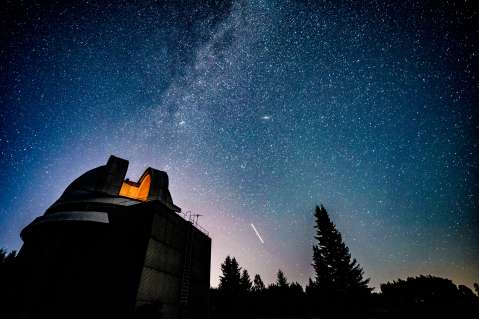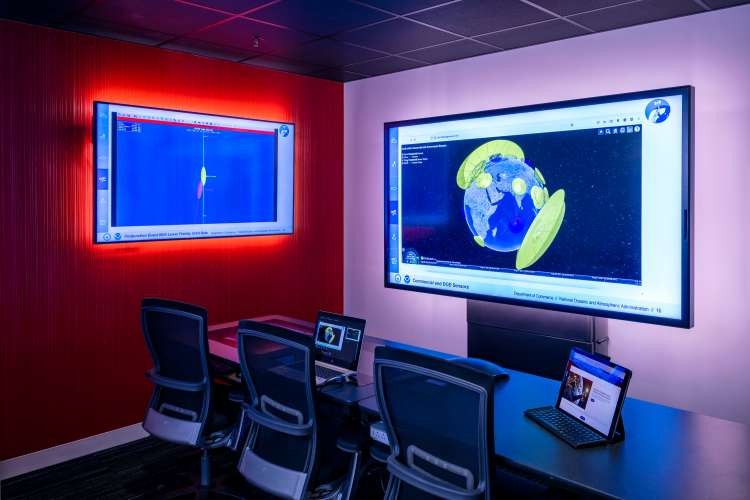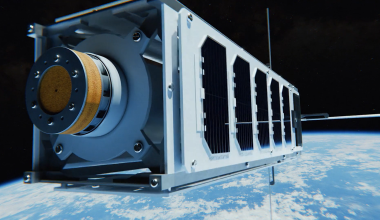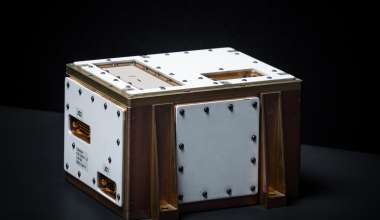With space becoming more diverse, congested, and contested, and needs changing from near Earth orbit to low Earth orbit and cislunar space, The Aerospace Corporation is executing an integrated approach to support U.S. leadership in space traffic management and coordination. Aerospace combines world-class expertise in conjunction analysis, collision assessments, and debris mitigation with technology at the bleeding edge of space traffic research and innovation.
Aerospace’s Demonstration and Visualization Center enables federal, civil, commercial, and international space customers to better understand the evolving space domain with greater speed and agility. This unclassified high-performance computing laboratory—located at Aerospace’s Arlington, Virginia, campus just outside Washington, D.C.—provides access to innovative capabilities driving transformation in space traffic coordination, artificial intelligence and machine learning, debris modeling, and other advances in digital engineering for the modern space enterprise.
The lab’s high-performance computing environment allows users to deploy and test digital architectures and tools to scale, at a fraction of the time and cost over having to develop custom solutions from scratch. This virtual tour of the Aerospace Demonstration and Visualization Center’s operational, equipment, and collaboration spaces also includes short demos of some of Aerospace’s software tools and prototypes, which are accessible in this lab.

A Brief History of Space Debris
Aerospace Virtual Tours
• xLab
• iLab
• STARS Mission Operation Center
• Physical Sciences Laboratories






